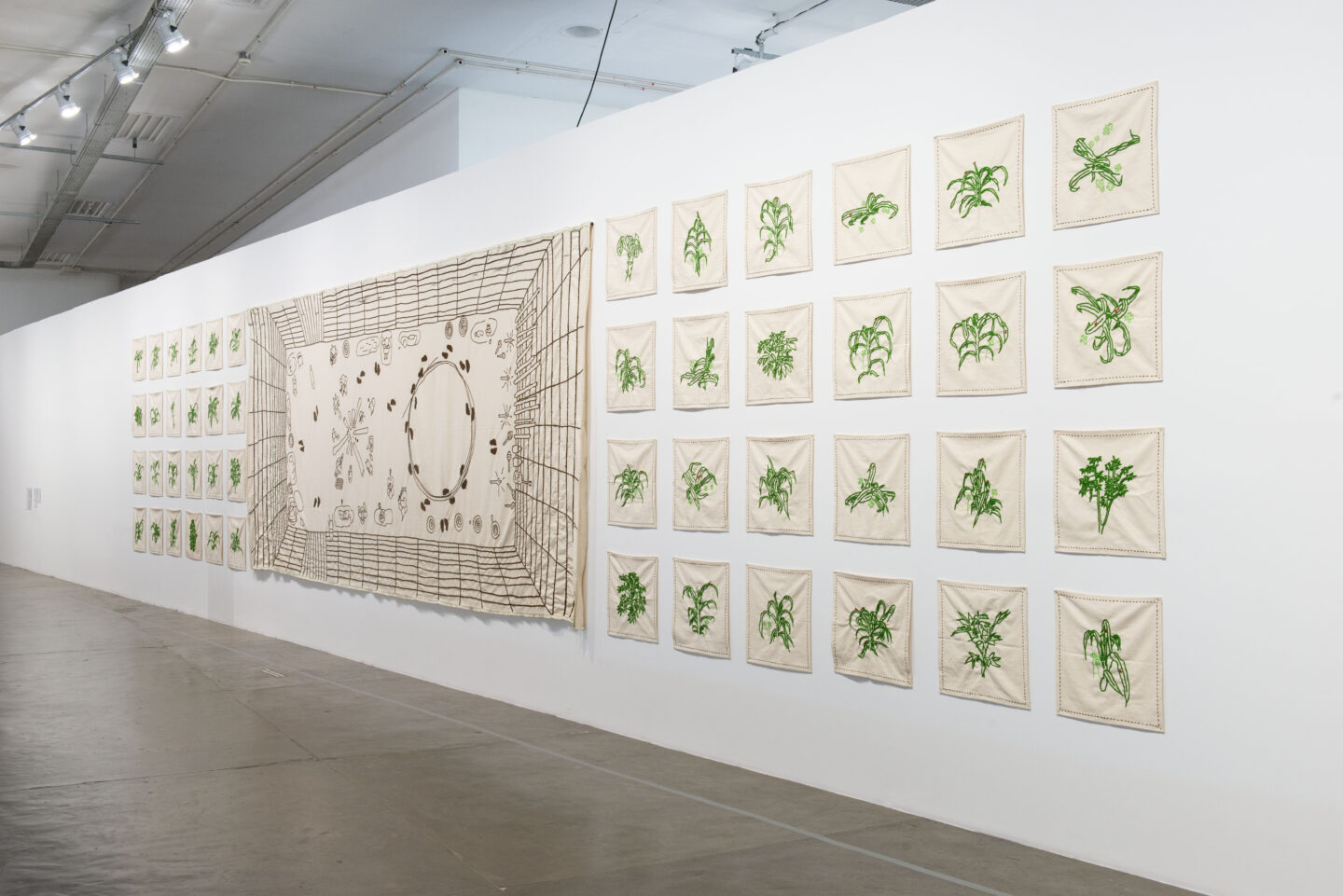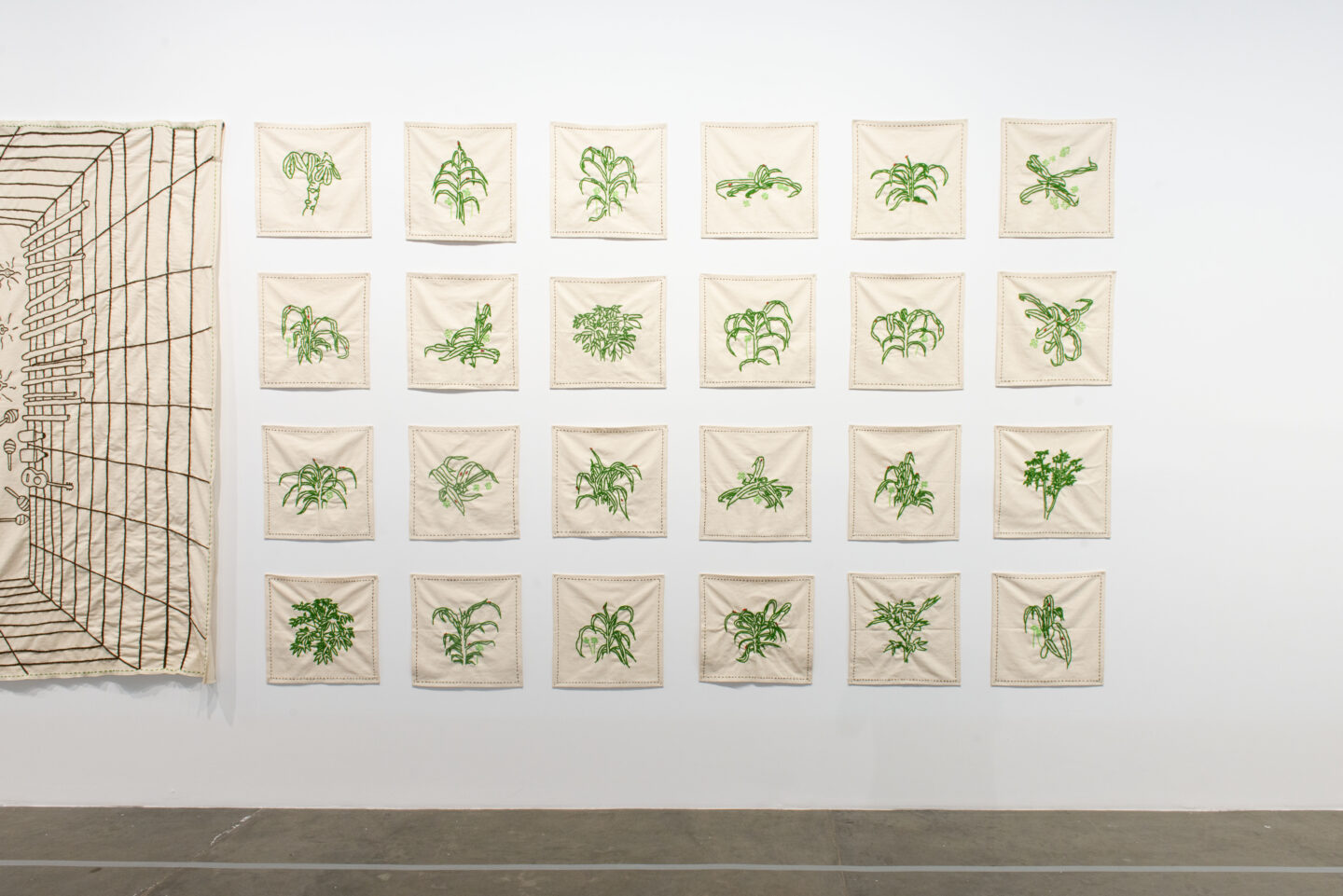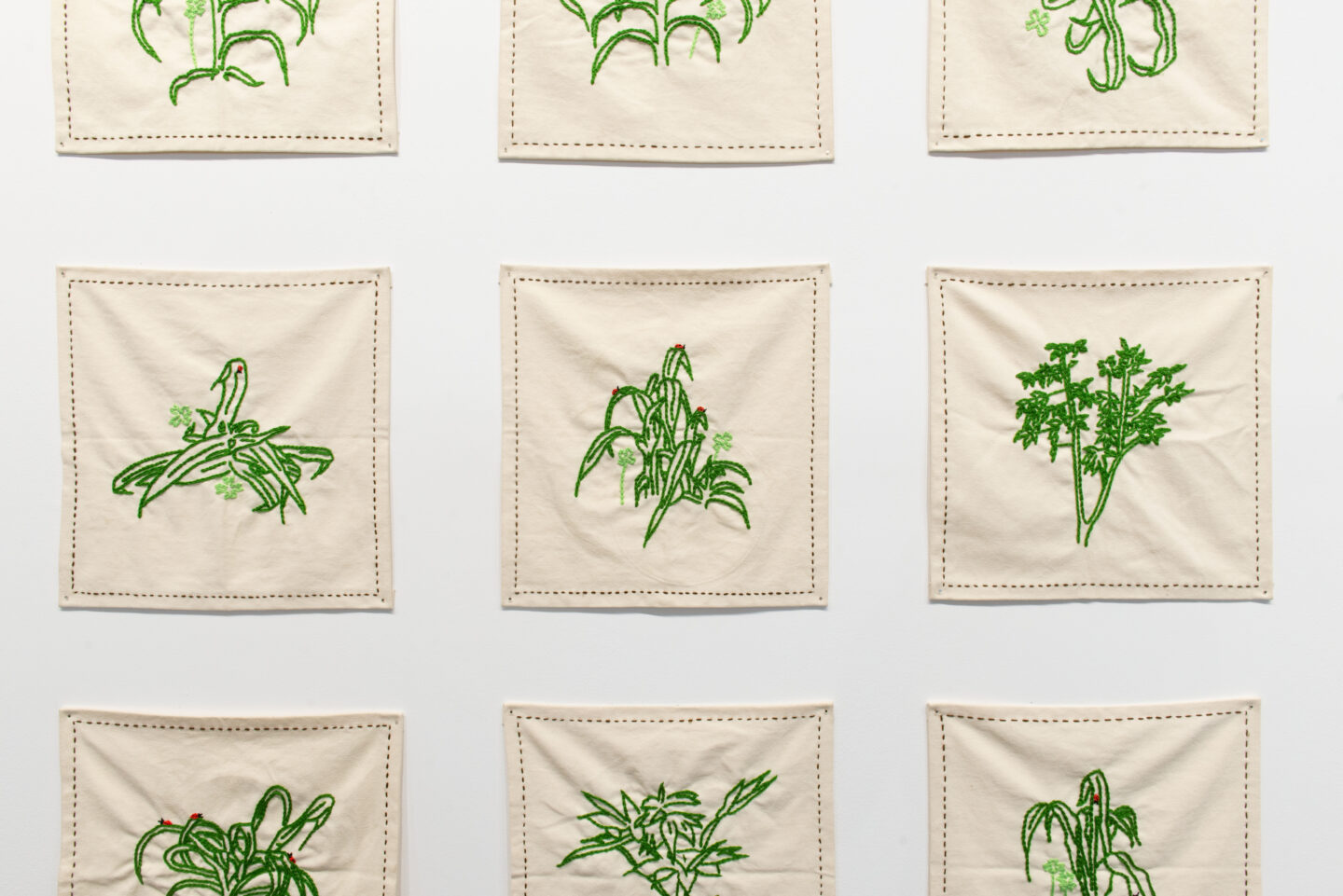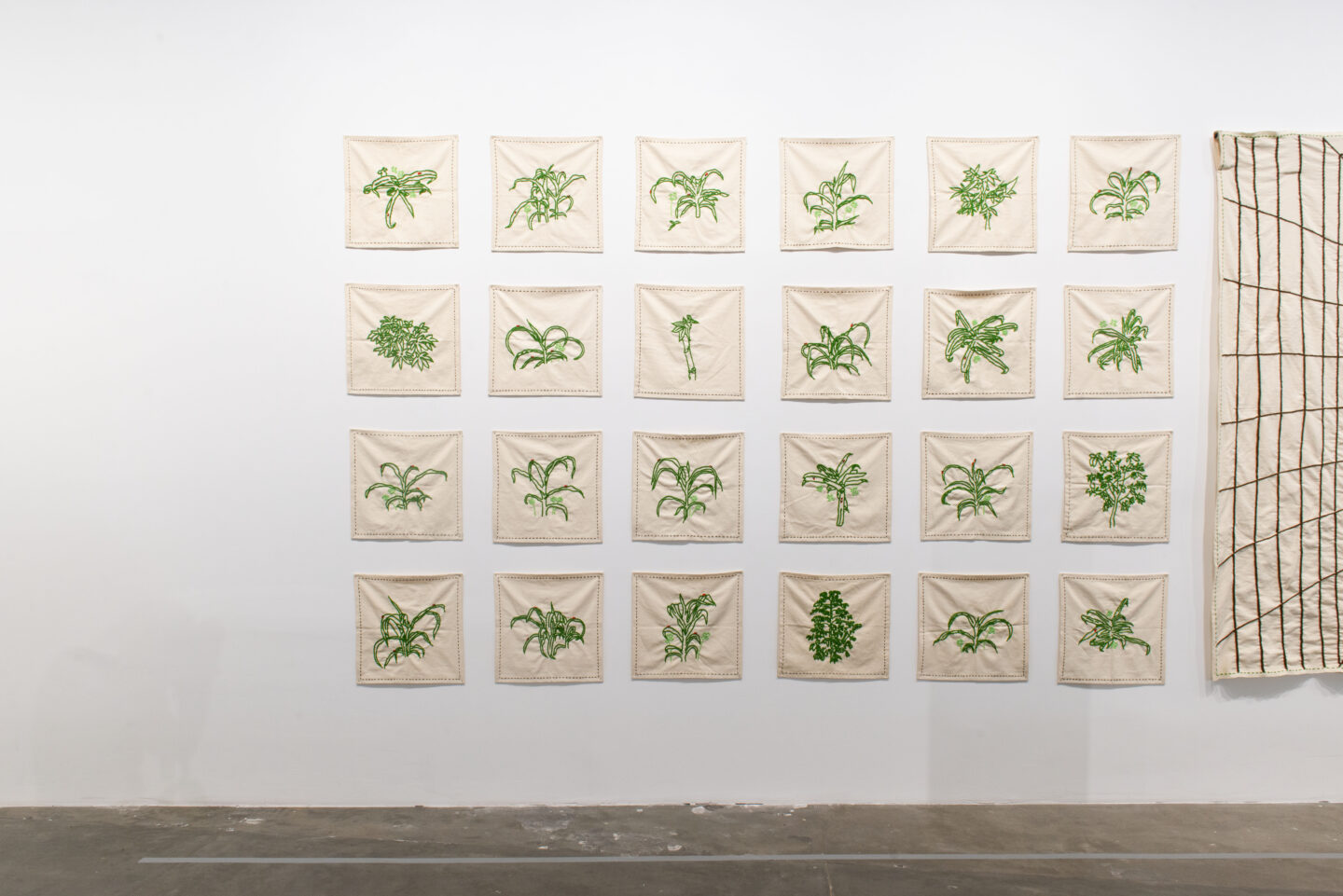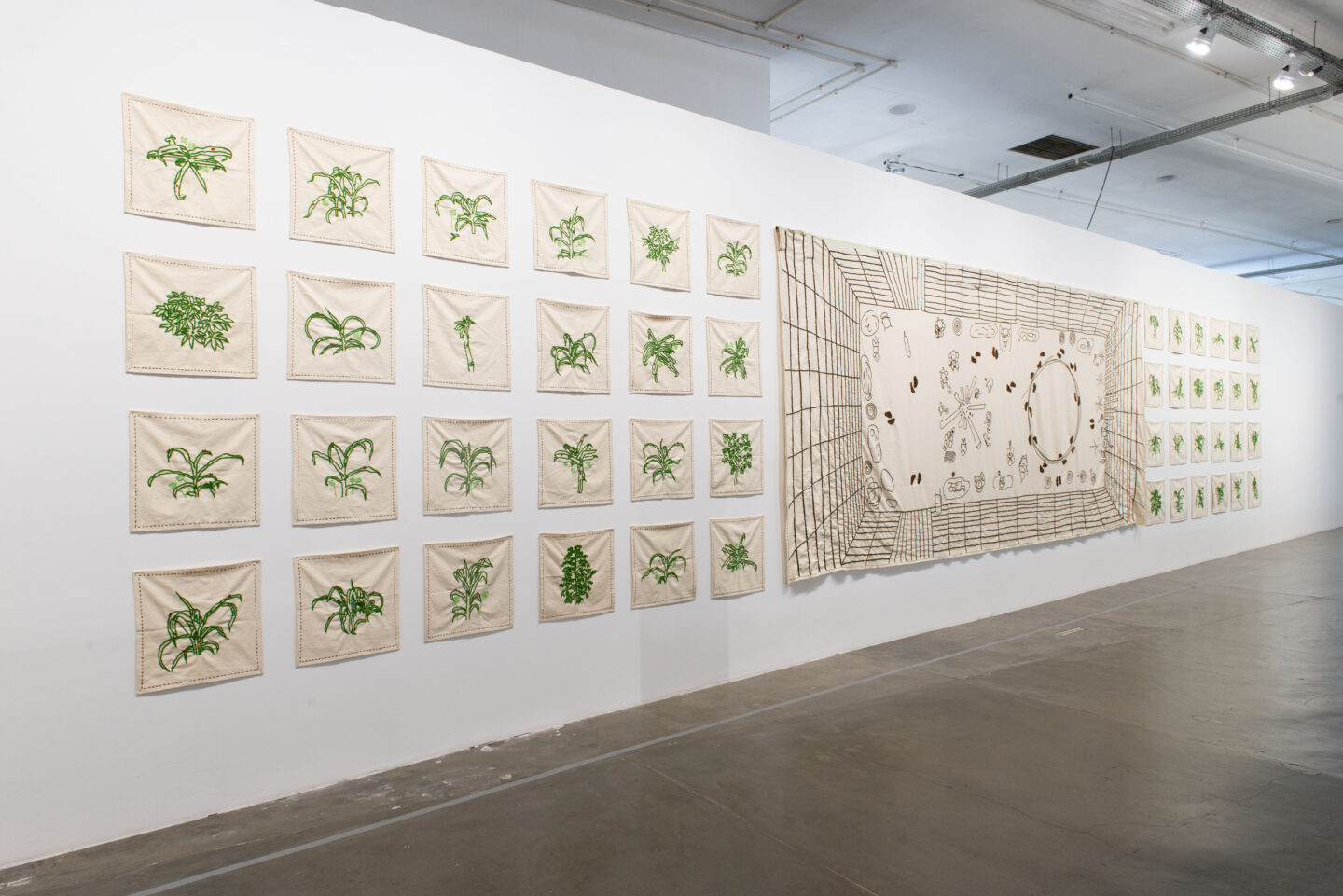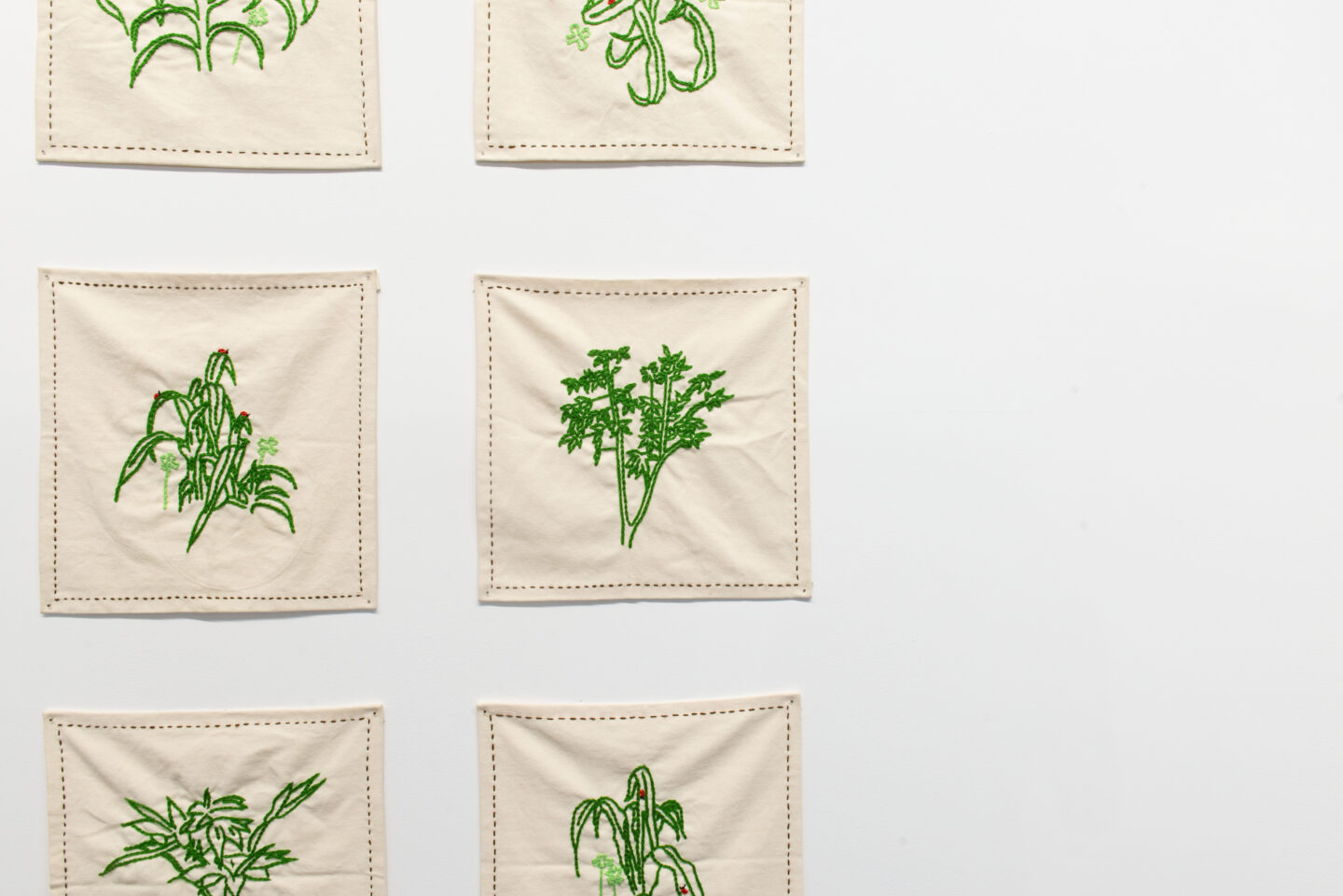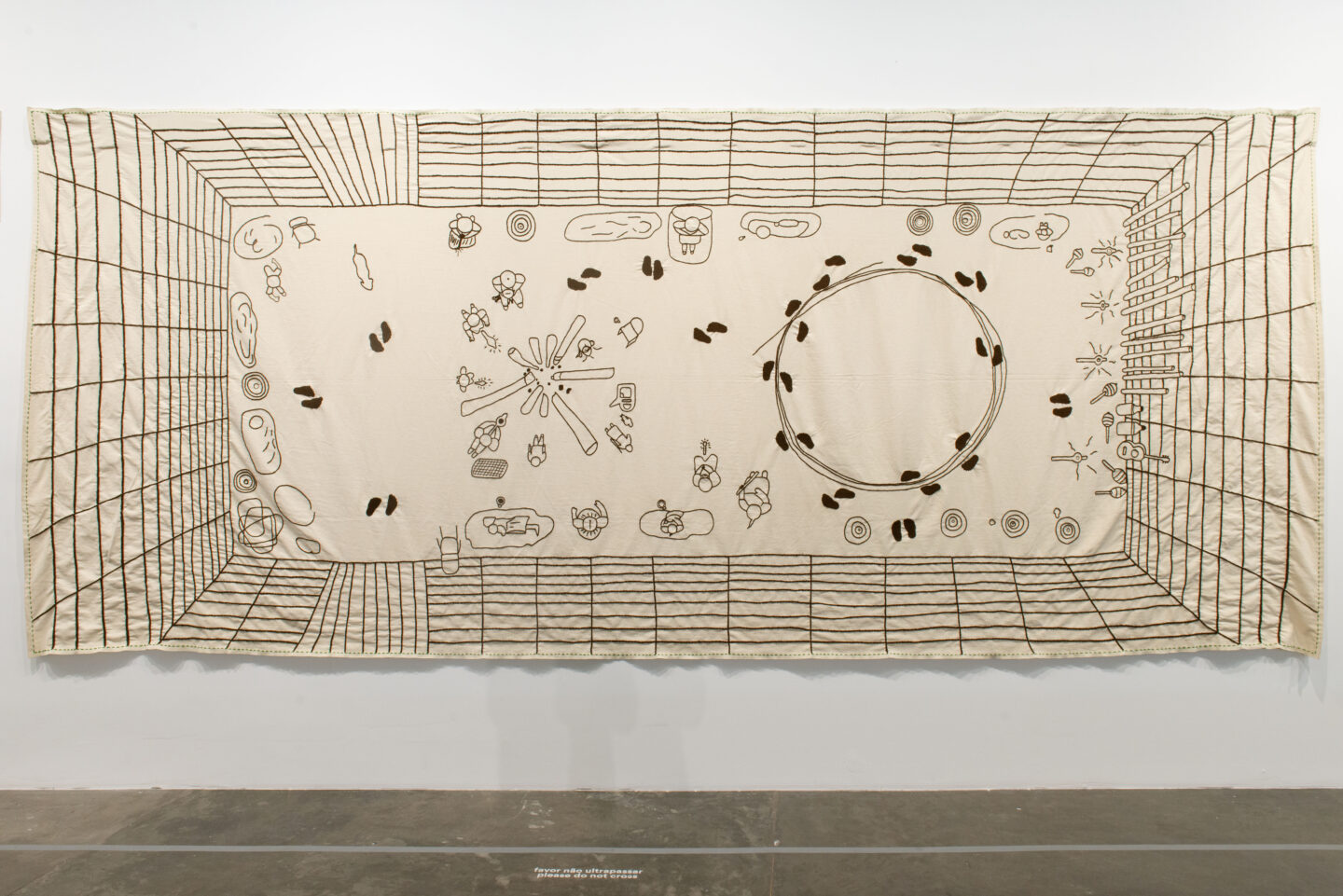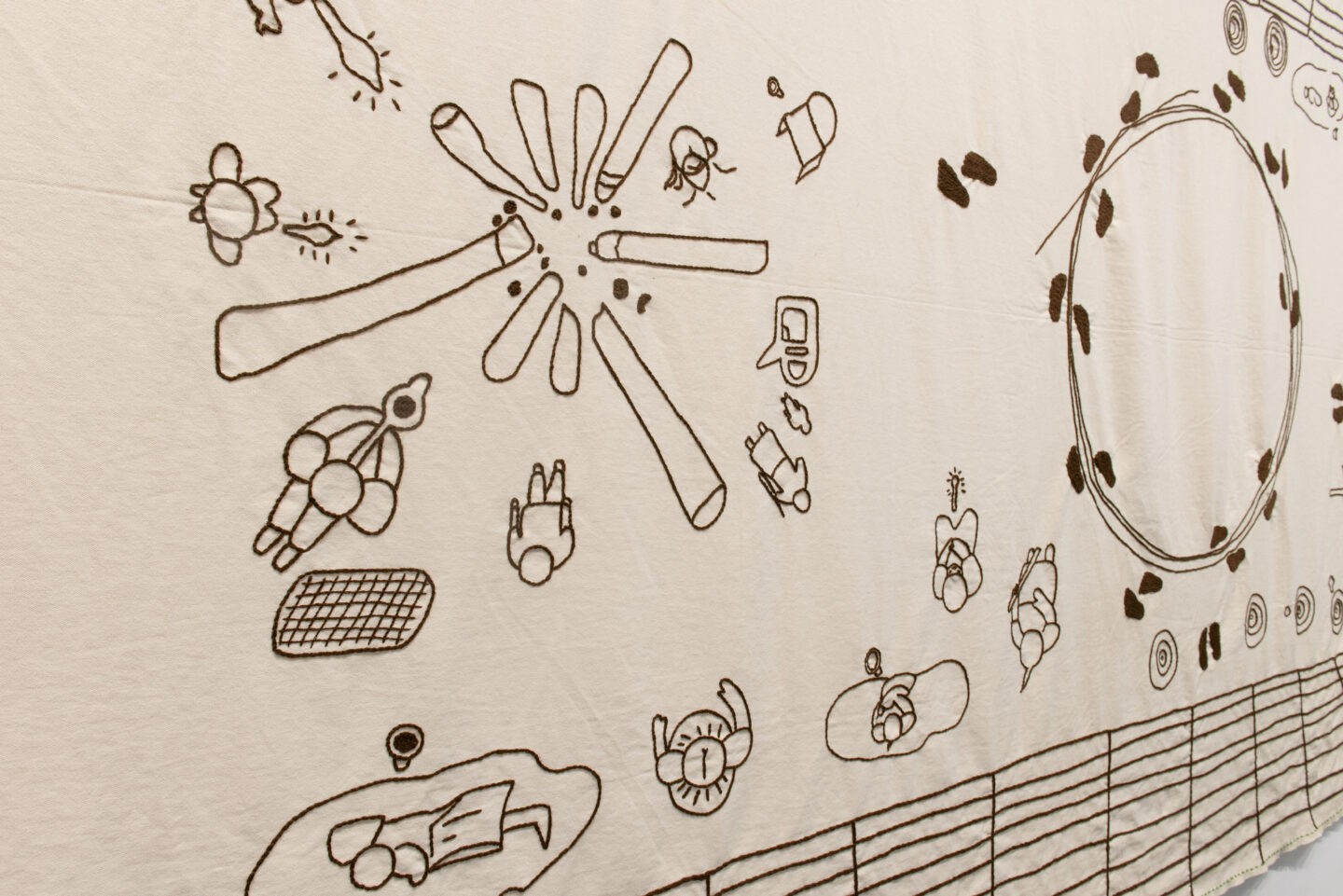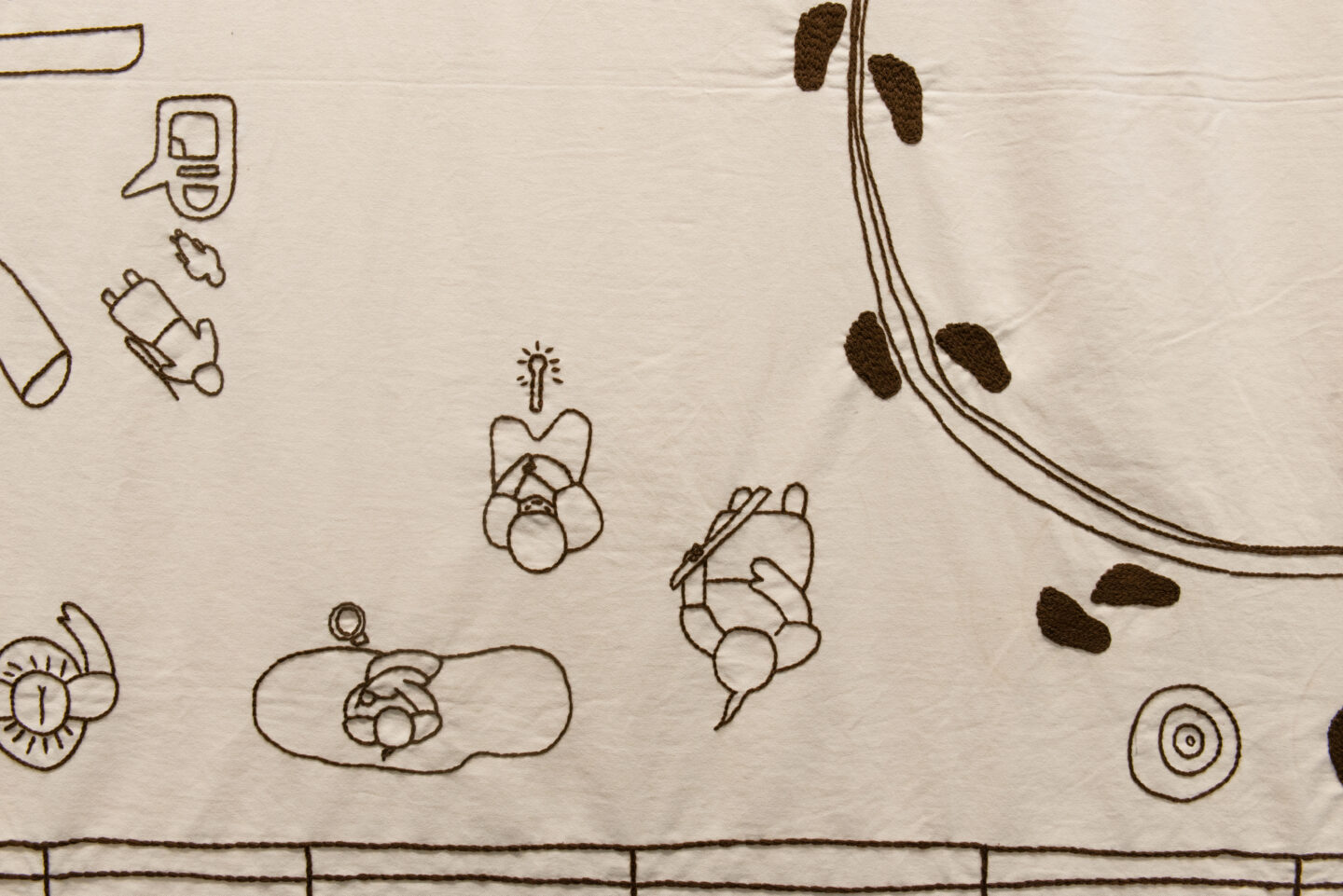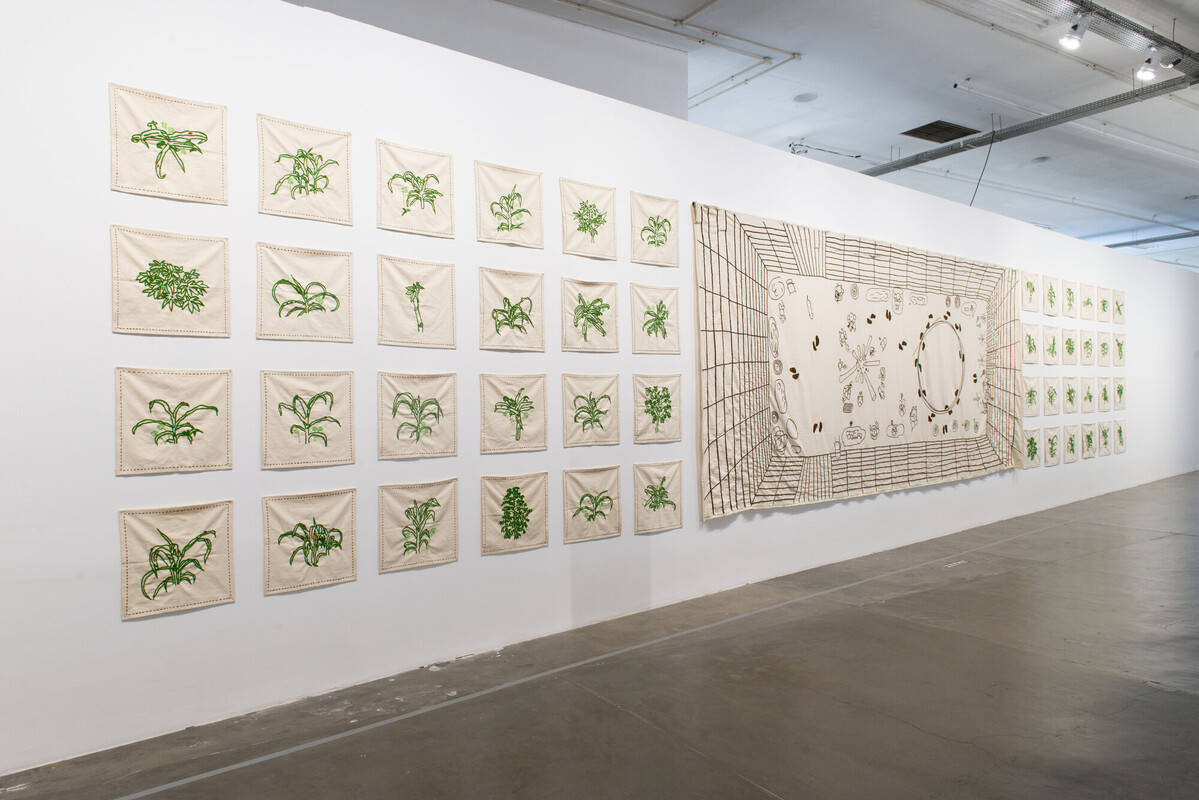
Edgar Calel
The jaguar is prominent in Mesoamerican cultures and appears in various kinds of representations. In Mayan culture and mythology, the jaguar has the ability to transcend space and time and to cross between the day and the spirit world to facilitate communications and connections between the ancestors and the living.
In Xar – Sueño de Obsidiana (2020), produced with Brazilian filmmaker Fernando Pereira dos Santos inside the Ciccillo Matarazzo Pavilion of the Bienal de São Paulo during the first wave of the COVID-19 pandemic in Brazil, Mayan artist Edgar Calel wears the skin of a jaguar as he walks around the pavilion and seeks to see and understand how the site was originally used by the Indigenous people who once inhabited that land. This is at once a transmutation between human and non-human and a transcendence of space and time; and it is also an act of constructing solidarity or “practicing community.” Throughout the film Calel wears a blue sweatshirt embroidered with the names of the twenty-two Mayan languages as his voice is heard reciting the poem of the same name as the film but in the Kaqchikel language, written by Calel, and composed of his dreams in Brazil during the pandemic.
Sharing in community is a topic fundamental to Calel’s artistic production. Calel’s Guarani house installation for the 35th Bienal de Sao Paulo is a large immersive drawing on canvas of a Guarani house surrounded by embroidered Yucca plants. The drawing is an architectural image and simultaneously a representation of Indigenous epistemology – a map of “practicing community” around a bonfire while sharing in storytelling, rituals, music, and meditation. The drawing reorients space from horizontal to vertical and invites the viewer to participate in the communal imaginary of indigeneity. The Guarani people are the largest Indigenous group in Brazil whose surviving population is estimated at 51,000 people. Today, three Guarani villages with a combined population of approximately 700 people live in the Jaraguá district on the outskirts of São Paulo.
mario gooden
- Vista da obra Nimajay Guarani [A grande casa Guarani], de Edgar Calel na 35ª Bienal de São Paulo – coreografias do impossível © Levi Fanan / Fundação Bienal de São Paulo
- Vista da obra Nimajay Guarani [A grande casa Guarani], de Edgar Calel na 35ª Bienal de São Paulo – coreografias do impossível © Levi Fanan / Fundação Bienal de São Paulo
- Detalhe da obra Nimajay Guarani [A grande casa Guarani], de Edgar Calel na 35ª Bienal de São Paulo – coreografias do impossível © Levi Fanan / Fundação Bienal de São Paulo
- Vista da obra Nimajay Guarani [A grande casa Guarani], de Edgar Calel na 35ª Bienal de São Paulo – coreografias do impossível © Levi Fanan / Fundação Bienal de São Paulo
- Vista da obra Nimajay Guarani [A grande casa Guarani], de Edgar Calel na 35ª Bienal de São Paulo – coreografias do impossível © Levi Fanan / Fundação Bienal de São Paulo
- Detalhe da obra Nimajay Guarani [A grande casa Guarani], de Edgar Calel na 35ª Bienal de São Paulo – coreografias do impossível © Levi Fanan / Fundação Bienal de São Paulo
- Vista da obra Nimajay Guarani [A grande casa Guarani], de Edgar Calel na 35ª Bienal de São Paulo – coreografias do impossível © Levi Fanan / Fundação Bienal de São Paulo
- Detalhe da obra Nimajay Guarani [A grande casa Guarani], de Edgar Calel na 35ª Bienal de São Paulo – coreografias do impossível © Levi Fanan / Fundação Bienal de São Paulo
- Detalhe da obra Nimajay Guarani [A grande casa Guarani], de Edgar Calel na 35ª Bienal de São Paulo – coreografias do impossível © Levi Fanan / Fundação Bienal de São Paulo
- Detalhe da obra Nimajay Guarani [A grande casa Guarani], de Edgar Calel na 35ª Bienal de São Paulo – coreografias do impossível © Levi Fanan / Fundação Bienal de São Paulo
Edgar Calel (Chi Xot, Guatemala, 1987. Lives in Chi Xot) works with a variety of media, exploring the complexities of the indigenous experience, as seen through the Mayan Kaqchikel cosmovision, spirituality, rituals, community practices, and beliefs, in juxtaposition with the systematic racism and exclusion that the indigenous people of Guatemala endure on a daily basis. He had his first solo exhibition, Pa Ru Tun Che ́ (From a Tree Top), at Proyectos Ultravioleta (Guatemala City); and has participated in numerous group exhibitions including uMoya: The Sacred Return of Lost Things, 12th Liverpool Biennial (UK); Soft and Weak Like Water, 14th Gwangju Biennial (South Korea); Is It Morning for You Yet?, 58th Carnegie International, (Pittsburgh, PA, USA); amongst others. His works are part of the permanent collections of Tate Modern (London, UK); Museo Nacional Centro de Arte Reina Sofía (Madrid, Spain); the National Gallery of Canada (Ontario); amongst many others.

 Português
Português